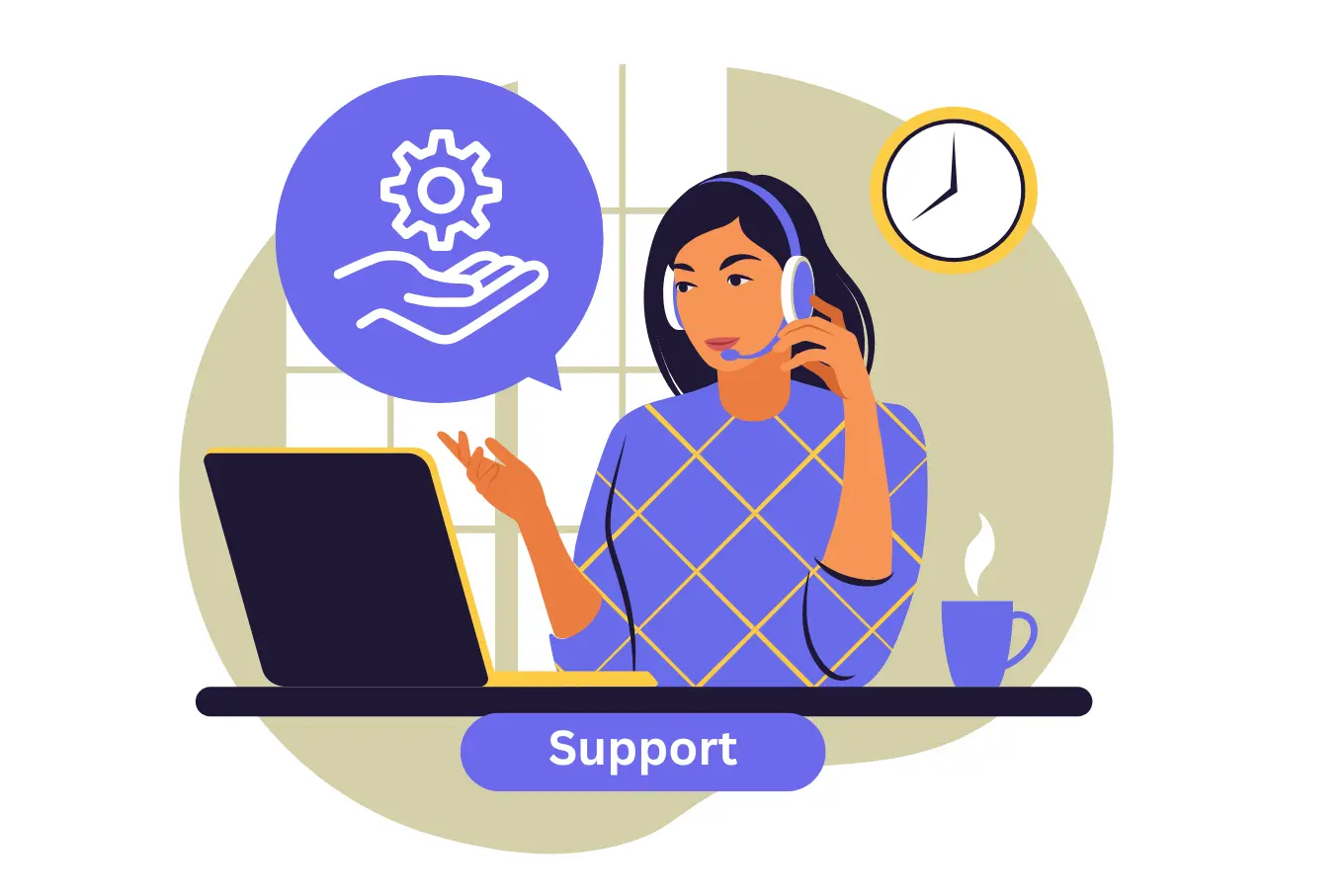A day in the life of a telecalling team is a blend of preparation, collaboration, persistence, and perseverance.
Telemarketing teams are the unsung heroes working diligently behind the scenes. These dedicated professionals handle countless calls daily, bridging the gap between companies and their customers.
Understanding the daily routine of a telecalling team offers a glimpse into the complexity and significance of their role.
Morning Brief: Setting the Stage for the Day
The morning brief is important to a telecalling team's daily routine. It serves as the foundation for the day, ensuring that everyone is aligned, motivated, and prepared for the tasks ahead.
This meeting typically occurs at the start of the workday, setting the tone for a productive and balanced team effort.

Critical Components of the Morning Brief
Setting Daily Goals: Outline specific targets for sales, number of calls, or customer follow-ups to provide direction. Encourage callers to set personal targets that align with the team's objectives for focused efforts.
Strategic Planning: Review and prioritise calls to focus on high-impact leads and follow-ups. Update scripts and key messaging to ensure consistent and current communication.
Identifying Problems: Discuss any unresolved customer complaints and address them promptly. Review technical problems to plan for quick resolutions and avoid workflow disruptions.
Developing Solutions: Brainstorm solutions collectively to leverage diverse perspectives. Assign responsibilities and set timelines to streamline implementation of solutions.
Motivation and Team Building: Provide motivational words and share success stories to inspire the team. Engage in activities or share anecdotes to strengthen team cohesion and support.
Your Day Will Go The Way The Corners Of Your Mouth Turn
Always encourage your telemarketing team to make the first call with a big smile and a positive attitude to maintain motivation and a positive tone throughout the day!
Scheduled Calls: Define Clear Time Slots for Different Types of Calls
Scheduling calls effectively is critical to a telecalling team's success. By defining clear time slots for different types of calls, callers can manage their time more efficiently and ensure that each call type receives the appropriate focus and attention.
Based on findings from Callyzer's database of over 4 million call logs, the optimal times to reach prospects are between 10:00 AM and 12:00 PM, followed by 3:00 PM to 5:00 PM.
Defining Time Slots for Different Types of Calls
1. New Leads

New leads are potential customers who have shown interest in the company's products or services but have yet to be contacted.
Allocate specific time slots during peak hours when leads are most likely available and receptive. This could be late morning or early afternoon when people are generally at their desks and less likely to be in meetings.
You can schedule calls in between 10:00 AM to 12:00 PM.
2. Follow-ups

Follow-up calls are made to prospects who have already been contacted or have engaged with the company, such as attending a webinar, downloading a whitepaper, or expressing interest in further information.
Schedule follow-up outbound calls during mid-morning or mid-afternoon, avoiding the start or end of the day when prospects are busy with other tasks or winding down. The best time to schedule follow-up calls is between 3:00 and 5:00 PM.
3. Support Calls

Support calls involve assisting existing customers with their queries, troubleshooting issues, or providing additional information about products or services they have already purchased.
Allocate these calls throughout the day, with more flexibility, as customers might reach out at varying times. However, ensure dedicated slots for proactive support to handle pending issues.
Breaks and Downtime: Schedule Regular Breaks to Keep the Team Fresh and Alert
Ensuring telecalling teams have scheduled breaks and downtime is crucial for maintaining daily productivity and morale.
1. Importance of Scheduled Breaks
Breaks allow telecallers to step away from their desks, stretch, and recharge mentally. This helps combat fatigue and maintain focus during calls.
Regular breaks contribute to well-being by reducing stress and preventing burnout. They provide moments to relax and reset, essential in a high-pressure environment like telecalling.
2. Effective Implementation
Frequency and Duration: Schedule short breaks of 10-15 minutes every 1-2 hours, depending on call volume and intensity. Additionally, allow for a more extended lunch break of 30 minutes to an hour to ensure adequate rest.
Encouraging Movement: Encourage telecallers to move around during breaks, whether it's taking a walk, doing stretching exercises, or simply stepping outside for fresh air. Physical activity boosts circulation and energy levels.

3. How Break & Downtime Can be Beneficial
Team Bonding: Breaks provide opportunities for informal interactions among team members, fostering camaraderie and team spirit. This strengthens relationships and improves collaboration during work hours.
Boosting Morale: Recognize the importance of breaks in maintaining a positive work environment. Telecallers appreciate employers prioritizing their well-being, increasing job satisfaction and retention.
Maintaining Focus: In addition to breaks, allocate downtime between intense calling periods to allow telecallers to review notes, prepare for upcoming calls, or handle administrative tasks. This prevents burnout and ensures consistent performance throughout the day.
Review Sessions: End the Day with a Review of Achievements and Areas for Improvement
Review sessions are an important component of a telecalling team's daily routine.
They serve as a structured time to reflect on the day's outcomes, celebrate successes, and identify areas for growth.
These sessions are crucial in maintaining team unity, improving performance, and fostering a culture of continuous learning and development.
1. Celebrating Achievements
At the end of each day, gather the telecalling team to celebrate their achievements.
This includes recognizing milestones such as meeting sales targets, securing significant leads, or receiving positive customer feedback.
Celebrating successes boosts team morale, reinforces a sense of accomplishment, and motivates telecallers to strive for excellence.
2. Analyzing Performance
Review sessions involve a thorough analysis of performance metrics and outcomes from the day's calls.
Telecallers discuss key performance indicators (KPIs) such as call completion rates, conversion rates, and customer satisfaction scores.
This analysis helps understand the practical strategies and areas that require adjustments. By examining performance data, teams can identify trends, strengths, and areas needing improvement to enhance overall effectiveness.
3. Identifying Areas for Improvement
A critical aspect of review sessions is identifying opportunities for growth and improvement.
This may involve discussing challenges encountered during calls, addressing recurring customer objections, refining communication skills, or exploring new approaches to enhance customer engagement.
By openly discussing areas needing improvement, teams can collectively brainstorm solutions and implement changes to overcome challenges more effectively in the future.
4. Setting Goals for Tomorrow
Review sessions also serve as a platform for setting actionable goals for the next day.
Based on the insights gained from the day's performance review, telecalling teams establish clear objectives and priorities.
These goals include increasing call volume during peak times, improving response times to customer inquiries, or enhancing the quality of interactions through targeted training or script adjustments.
Setting specific goals ensures the team remains focused and aligned with overarching business objectives.
Bonus Tip:

